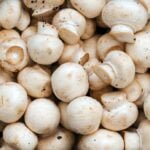What is the ideal substrate for Shaggy Manes?
Title: Ideal Substrate for Shaggy Manes: A Comprehensive Guide
Introduction (approximately 200 words):
—————————————–
Shaggy Manes (Coprinus comatus) are captivating mushrooms that belong to the Agaricales order. Renowned for their unique appearance, culinary uses, and ease of cultivation, Shaggy Manes have become a popular choice among mushroom enthusiasts. However, the key to successfully cultivating these mushrooms lies in providing the ideal substrate. This comprehensive guide aims to provide detailed insights into creating the perfect environment for growing Shaggy Manes.
Understanding the Ideal Substrate for Shaggy Manes (approximately 500 words):
——————————————————————–
An ideal substrate refers to the material that supports fungal growth. In the case of Shaggy Manes, the recommended substrate comprises a mixture of cow or horse manure and either straw or sawdust. This combination offers the necessary nutrients, moisture retention, and structural support for the mushrooms’ thriving growth. Let’s delve into each component of the substrate to better comprehend its significance:
1. Cow or Horse Manure:
– Shaggy Manes thrive on nutrient-rich substrates, making cow or horse manure an ideal choice. These organic materials are widely accessible and can be obtained from local farms or stables.
– It is essential to age fresh manure for several weeks or compost it before use. This process eliminates potential pathogens and excessive levels of ammonia that could hinder mushroom growth.
– Before incorporating it into the substrate mixture, moisten and thoroughly mix the manure to achieve a consistent moisture content.
2. Straw or Sawdust:
– The addition of straw or sawdust to the manure helps create the optimum texture and structure for Shaggy Manes to colonize and fruit successfully.
– Straw is preferred due to its easy availability and moisture retention properties. Soaking the straw in water for 24 hours prior to use ensures an appropriate level of moisture.
– Sawdust can also serve as an alternative substrate component, providing a similar texture to straw. However, it often requires additional steps, such as sterilization or pasteurization, to eliminate potential contaminants.
Creating the Shaggy Manes Substrate Mixture (approximately 300 words):
————————————————————-
To establish an ideal substrate mixture, follow these steps:
1. Collect the Materials:
– Obtain fresh and reliable cow or horse manure from a trustworthy source.
– Gather straw or sawdust that is free from chemicals typically used in lumber treatments.
2. Prepare the Substrate:
– If using manure, age it for a few weeks or compost it to enhance stability and nutrient availability.
– Moisturize the manure and straw/sawdust until it reaches a consistency similar to a squeezed sponge.
– Thoroughly mix the materials in a ratio of 2:1 (manure:straw or sawdust) to ensure a balanced and well-blended substrate.
3. Sterilize or Pasteurize (optional):
– Depending on personal preference and circumstances, consider sterilizing or pasteurizing the substrate mixture to eliminate competing organisms and pathogens.
– Sterilization involves subjecting the mixture to high heat in a pressure cooker or autoclave, while pasteurization requires heating the substrate to a lower temperature for a longer duration.
Using Newly Laid or Fertilized Lawns for Shaggy Manes (approximately 400 words):
————————————————————
In addition to the traditional substrate mixture, newly laid or fertilized lawns can serve as suitable habitats for Shaggy Manes. This alternative method caters to individuals who prefer a more naturalistic approach to cultivation. Here are a few key considerations:
1. Lawn Selection:
– Opt for a recently laid or fertilized lawn, preferably within the past year. Such lawns often offer the necessary nitrogen and moisture content required by Shaggy Manes.
2. Maintenance:
– Ensure the lawn receives regular watering to maintain a consistently moist environment conducive to mushroom flourishing.
– Avoid using chemical pesticides, herbicides, or fungicides that can be detrimental to the mycelium and mushrooms.
3. Supporting Mycelial Growth:
– To encourage mycelial development, lightly rake the soil to expose the mycelium to air and provide access to organic matter.
– Applying a thin layer of organic compost or straw helps retain moisture and provides additional nutrients as it decomposes.
Conclusion (approximately 200 words):
————————————
The ideal substrate for cultivating Shaggy Manes comprises a well-balanced mixture of cow or horse manure and straw or sawdust. Such a combination ensures the presence of necessary nutrients, appropriate moisture retention, and structural support required for successful mushroom growth. Furthermore, newly laid or fertilized lawns can serve as viable habitats for Shaggy Manes, provided proper watering and maintenance practices are followed. Understanding and providing the ideal substrate conditions are fundamental to the successful cultivation of these captivating mushrooms. Get ready to embark on a fulfilling journey of growing Shaggy Manes right at home.




